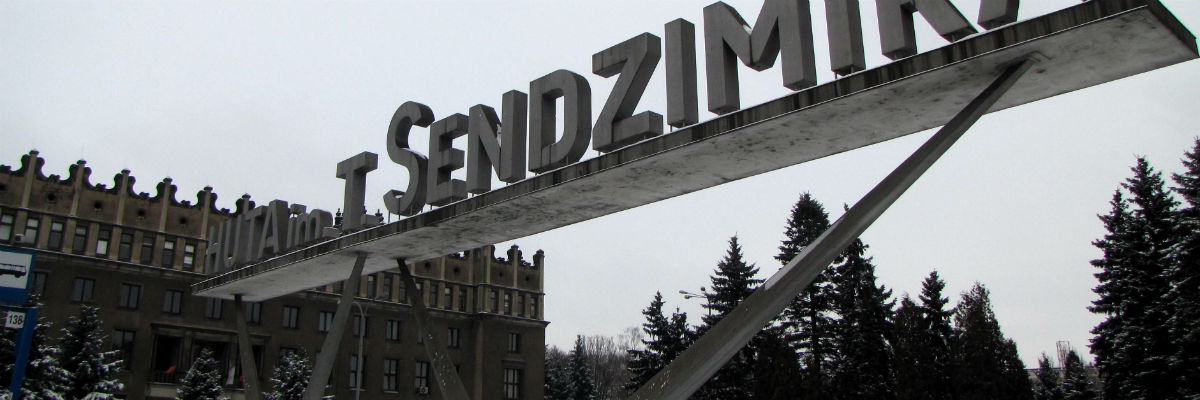Goodbye Lenin? Not quite, Krakow’s Communist district of Nowa Huta lives on, and whilst the area has few local fans, it has proved a big hit with tourists. Stuart Wadsworth investigates.
Krakow: a city of dreaming spires, ancient castles, dragons, myths, cobbled streets, cosy bars and coffee shops; an intellectual hub, a university town for seven hundred years; a favourite on the stag night circuit and the biggest tourist pull in Poland. Surely saturated as far as tourist ideas go? Well, ever since they begun back in 2004, the folk at ‘Crazy Tours’ have thought otherwise. Intended as an offbeat alternative to the usual historical trudge around the Old Town, this Michael Palin–endorsed spin around Krakow’s least-loved quarter – Nowa Huta – has been expanding exponentially since its inception, and shows no signs of slowing down. I decided to find out what is making this one of the great entrepreneurial success stories in Poland….
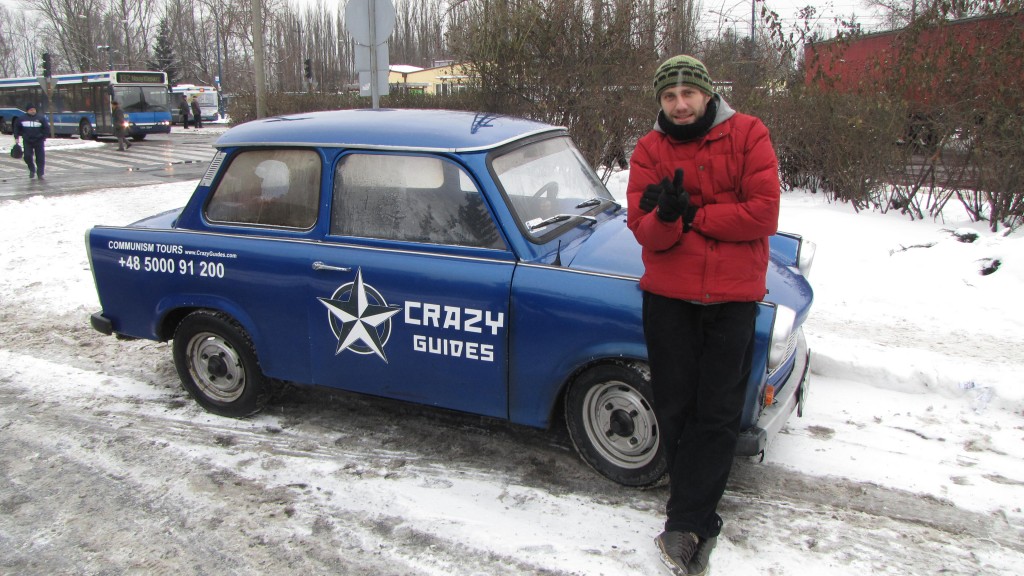
I waited outside my apartment for my chauffeur to arrive: shivering, despite being heavily wrapped up. Winter in 2010 as cold as any I could remember. Sure enough, and bang on time, a bright blue Trabant pulled up. “Welcome to Krakow” cried my cheerful driver for the day, a bright young chap called Cyril, understandably oblivious to the fact that I live here. One of the knowledgeable team of ‘Crazy Guides’ set up six years ago by Michal Ostrowski (aka Crazy Mike), he chatted amiably as we sped up the road out east of Krakow and to the Communist legacy that is Nowa Huta. Hunched into a rather uncomfortable space, camera and notepad wedged between my knees, the car lurched into fourth gear and nudged 50km/h, pretty much its top speed, as Cyril explained some of Nowa Huta’s history to me.
…the car lurched into fourth gear and nudged 50km/h, pretty much its top speed…
As a long-term ex-pat, I was already well aware of this odd curiosity that sits on the city’s eastern fringes, an unwanted adopted child that is a bit of an embarrassment to Krakow’s often sniffy residents. Built as a kind of antidote to the perceived ‘intellectualism’ of Krakow, and as a proletarian utopia in the brave new world of post-war, Stalin-controlled Poland, Nowa Huta (literally ‘New Steelworks’) was never popular amongst Poles, despite the wealth of propaganda. Today, it’s considered by most Krakowians as, at best, dull and uninspiring, and at worst downright dangerous.
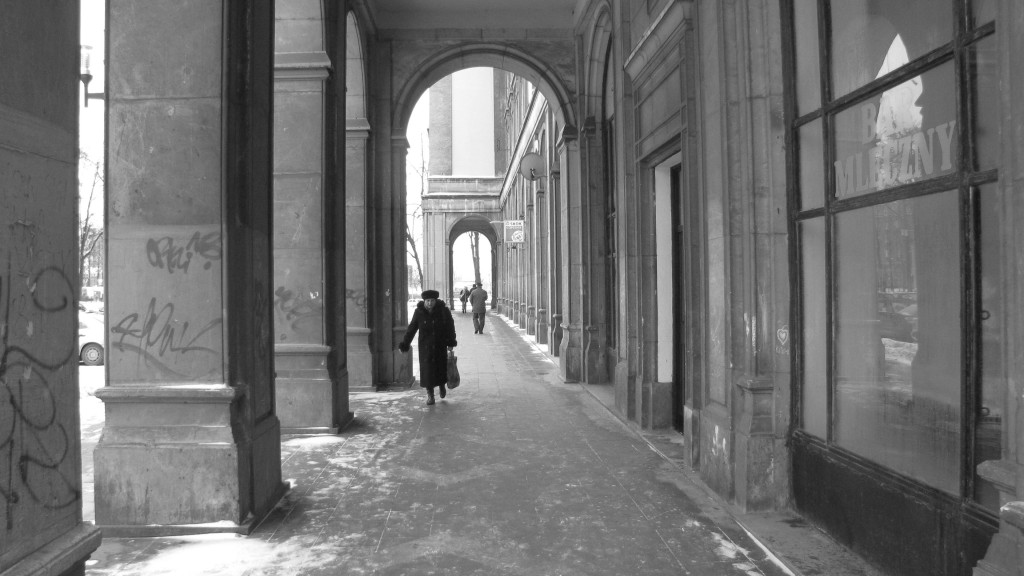
“The things that people say about Nowa Huta today are all myths,” explained Cyril. “They base their opinions on what existed twenty, thirty years ago. They have memories like elephants.” True enough; having been to Huta on many occasions, I have never witnessed any violence or trouble, never seen or breathed any pollution from the now not-so-new factory. And yet, nary will you hear a positive word spoken about this area by a true Krakowian; they simply refuse to give it any credit whatsoever; as if blind to any possible benefits a trip there might have.
Busts of Lenin adorn the tables; an old man slurps his soup in the corner, a couple of women in their 60’s with big wigs and lots of makeup chat animatedly…
As we walked into the only restaurant in central Nowa Huta, Stylowa (‘Stylish Restaurant’, somewhat implausibly), stomping the snow from our boots on the doorstep, I realized what a refreshing contrast this made to the international tourist spot that is Krakow’s Market Square. Here in Huta one is confronted by few symbols of ‘modern’ Poland; instead, you are transported back to about 1973, when this was the cultural centre of a community which made up for in spirit what it may have lacked in true style. Busts of Lenin adorn the tables; an old man slurps his soup in the corner, a couple of women in their 60’s with big wigs and lots of makeup chat animatedly whilst sipping Zywiec beer. At 2pm. A suspicious-looking man leans on a fruit machine by the toilet whilst a lady guards the toilets zealously, and only lets you pass if you grace her palm with 50 groszy (10p). There is a general air of faded grandeur.
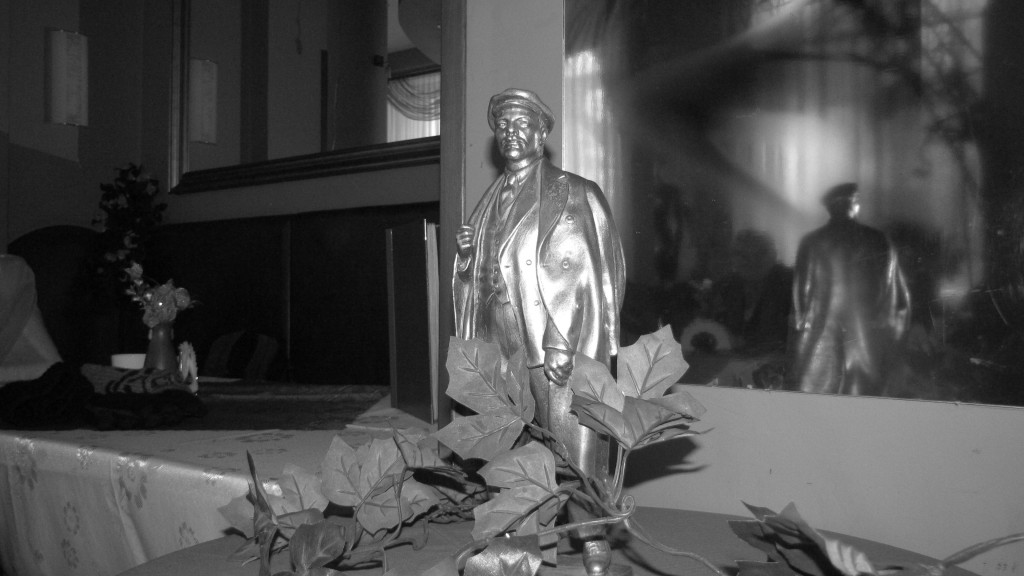
“This place used to be where it all happened”, explains Cyril, “it was the place where locals would meet on a Saturday night, dance, sing, drink and be merry. Many a marriage in this town had this place to thank”. As I gazed around the room, at the gaudy but charming furniture and curtains, the thin tablecloths with cigarette burns in them, it seemed we had walked into a working museum, a glorious survivor of Communist times – perhaps one of the few left in modern Poland. Cyril spread out old maps and plans of Nowa Huta in front of me, examples of the ambitious idealism of the Communist architects. He explained the style and scale of the buildings here were designed as a riposte to Krakow, to give the people of Nowa Huta a sense of grandeur. Indeed, wandering through the arches and arcades around Plac Centralny, one is reminded of Italianate Renaissance design, a certain classical whiff in the air which may one day be appreciated by locals who currently deride this so-called ‘Communist Realist’ style as hopelessly passé and charmless.
We finish off our cups of coffee and head out into the cold again, bidding farewell to the barmaid who is bemused to see me taking a snap of the toilet attendant.
“During the summer months, this place comes alive”, says Cyril, dreamily. “The streets are clean, there isn’t much traffic, and there are so many parks and trees. And the girls here…” he tails off at this point and I’m left to fill the gap, as it were, mentally. We finish off our cups of coffee and head out into the cold again, bidding farewell to the barmaid who is bemused to see me taking a snap of the toilet attendant.
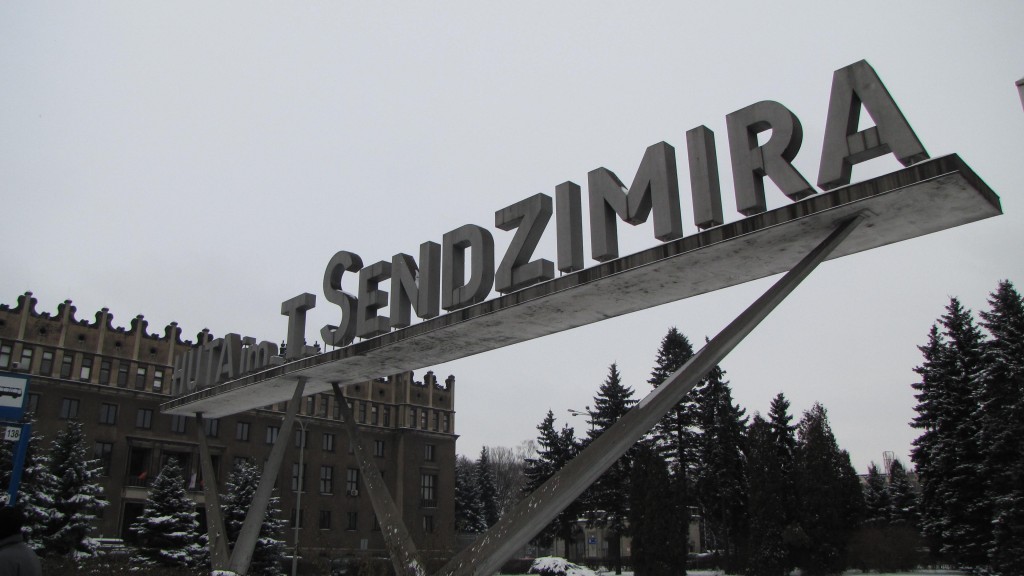
Cyril whisks me to the eastern flank of Nowa Huta – to the foreboding gates of the steelworks after which the town is named – the entrance to what was one of the largest steel producers in eastern Europe, and also one of Europe’s biggest polluters. “Today, production is only a fraction of what it used to be, but they still employ around 10,000 people here, though the chimneys don’t show it,” Cyril tells me as I gaze up at the sign outside. It simply reads ‘Huta im. T. Sendzimira’ and is somehow reminiscent of the ‘Arbeit Macht Frei’ sign outside Auschwitz.
“This place dwarfs central Krakow. There are shops, buses, roads in there, it’s a whole world in itself”
“This place dwarfs central Krakow. There are shops, buses, roads in there, it’s a whole world in itself”. Unfortunately for us, this world remains a mystery to the casual tourist, as it’s strictly open to employees only, except on rare occasions such as when the Sacrum Profanum festival welcomed Kraftwerk and Aphex Twin to Krakow. No doubt the industrial grandeur suited them. “When you stand on a hill outside Nowa Huta you really get an idea of the size of this place – it’s huge,” says Cyril.
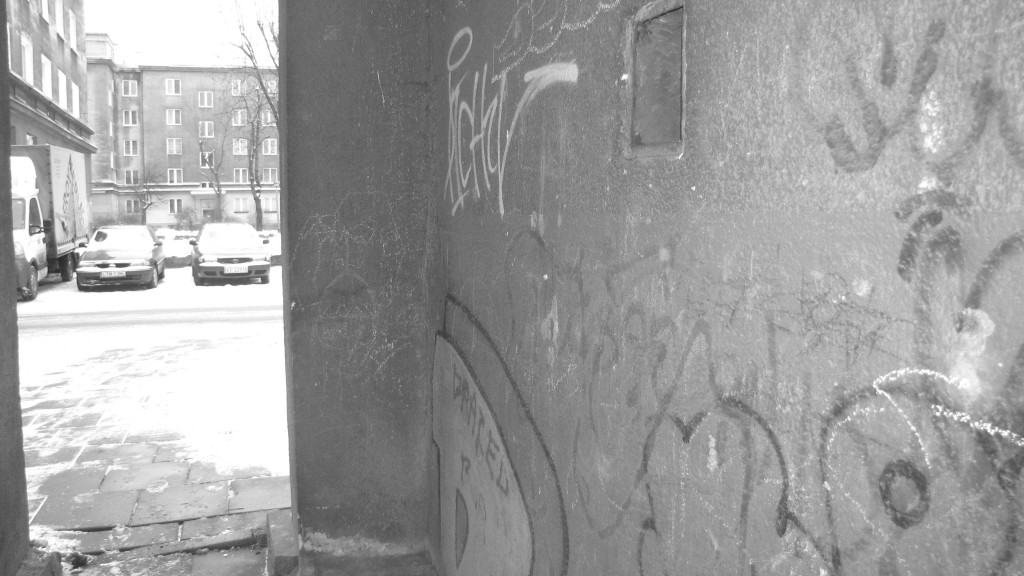
It would be great to see this for myself, but instead we head off to have a more domestic taste of Communism – to one of the blocks outlying Plac Centralny (confusingly streets here do not have names, and you just get district names and block numbers, which admittedly does add to the Communist mystique but which must be a nightmare for postmen). “This flat will give you a unique flavour of Poland in the 70’s,” promises Cyril.
Kierunek: Nowa Huta shows a fascinating glimpse of Communist-era propaganda; lots of smiling, healthy workers in the sunshine and robust-looking women mucking in…
I am led into the front room where I am shown a short video on a 12 inch black and white tele about Nowa Huta’s construction. Kierunek: Nowa Huta (Direction: Nowa Huta) shows a fascinating glimpse of Communist-era propaganda; lots of smiling, healthy workers in the sunshine and robust-looking women mucking in – a utopian vision which was far from reality, but which nevertheless adds to the kitschy, fun and possibly rose-tinted look at Poland’s recent history. The room is adorned with cheap and esoteric Communist memorabilia: shiny kitsch ornaments, plastic flowers, tacky wallpaper, even a packet of 80s ‘papierosy’ – Communist cigarettes, which you had to pinch the end of to create a ‘filter’ and prevent sucking the tobacco into your lungs.
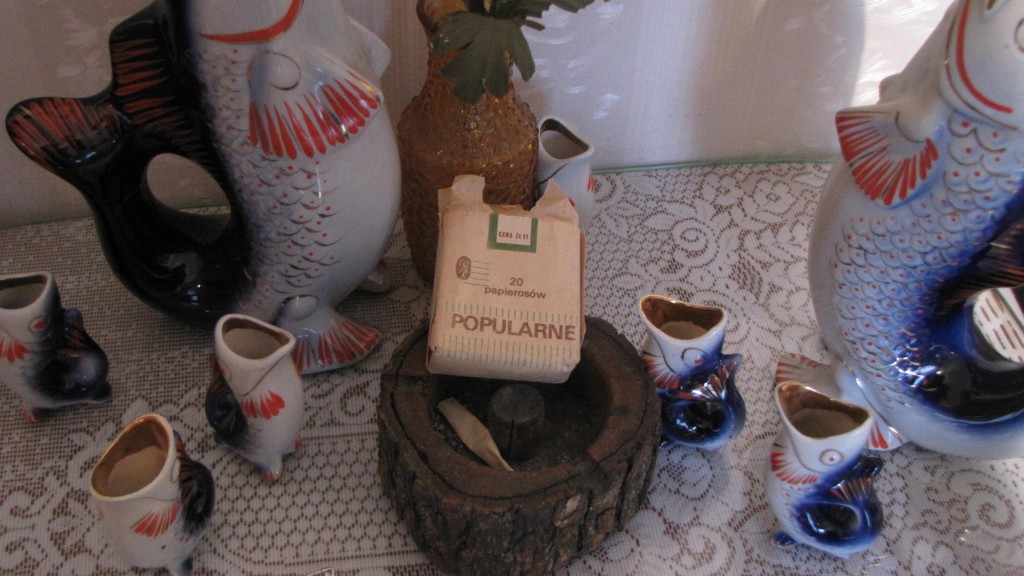
I am led into the kitchen and shown a vast collection of empty vodka bottles, including the ‘workers’ choice, Czerwony Kartka (Red Card), a brand which no doubt stripped paint if required. Not recommended, although a glass of Wyborowa may be proffered to Crazy Tourists. “Cheap, but effective,” grinned Cyril. “People had to have fun. The state encouraged it – and they encouraged pre-marital sex too, by making condoms widely available.” (This was confirmed by a very uncomfortable-looking sheath on display in the bedroom).
“People had to have fun. The state encouraged it – and they encouraged pre-marital sex too, by making condoms widely available.”
“Anything to undermine the church, who frowned on this.” Indeed. I very much liked this flat, a great insight into communist era living, and accurate – down to the minutest details, such as shampoo bottles and soap in the bathroom and even a basic top-loading primitive washing machine. “People weren’t so poor – they just didn’t have anything good to buy!” Cyril said as we made our way to our final port of call for the day – the ‘Arka Church’.
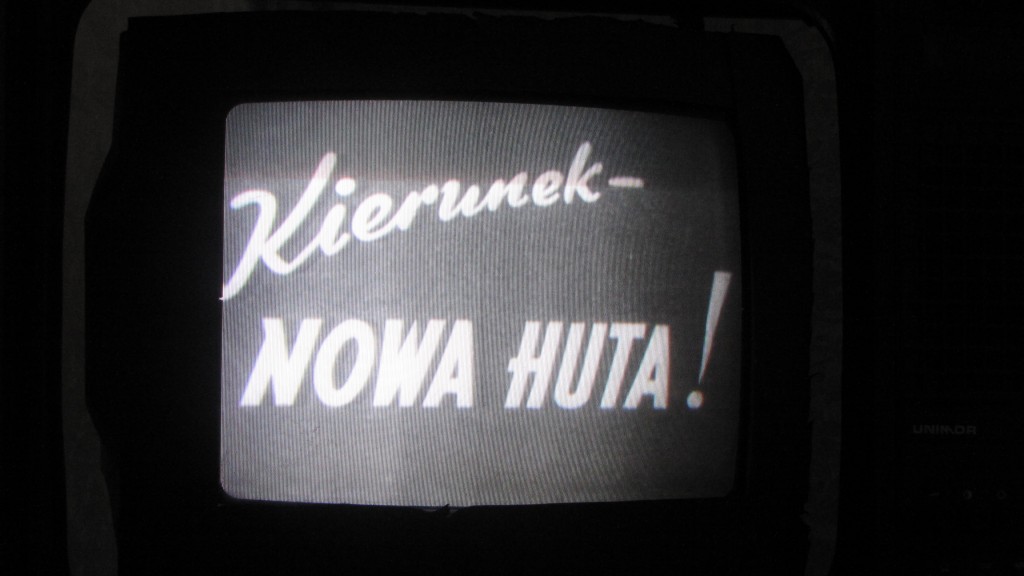
“This church,” explains Cyril, “is a huge symbol for the people of Nowa Huta. They fought hard to get it, and only after years of wrangling did the Communist regime finally allow the people to build it; although they refused them permission to use steel from the local works – meaning that the structure took ten years to complete”. The Noah’s Ark-shaped building is not exactly easy on the eye; it is a grey, concrete affair. But the symbolism of this place to the locals, devout Catholics as much as any other sector of Polish society, should not be underestimated. A tank that we passed on the way here was a reminder of the oppression these people felt – and religion was the one reference point, beyond vodka – on which they could pin their hopes.
…religion was the one reference point, beyond vodka – on which they could pin their hopes.
A sobering thought, and one that makes you realize why Pope John Paul II – a statue of whom stands outside Arka Pana – is still such an adored figure in Poland, his part in the fight against Communism still remembered gratefully by Poles. Nowa Huta today stands as a stark reminder of that fight, and the 50 years Poland spent trapped behind the Iron Curtain, which may explain its unpopularity here. ‘Crazy Tours’ has tapped into a vein of foreign curiosity and appreciation of the recent past which the Poles, at the moment, simply don’t share. Maybe with a few more Cyrils around to spread the word, in a few years they will, I thought, as we sped back to ‘normality’ and Krakow’s dreaming spires came into sight once more. ‘Direction: Nowa Huta’. What a great catchphrase, just Crazy enough to make sense.
Click here for more info on Crazy Guides Communist tours. Or BOOK THIS TOUR safely and securely, with a best price guarantee, via our partners at Get Your Guide.
For more Krakow stories, check out our top five Krakowian cellars, the best pierogi restaurants in town and of course our complete city break guide.
